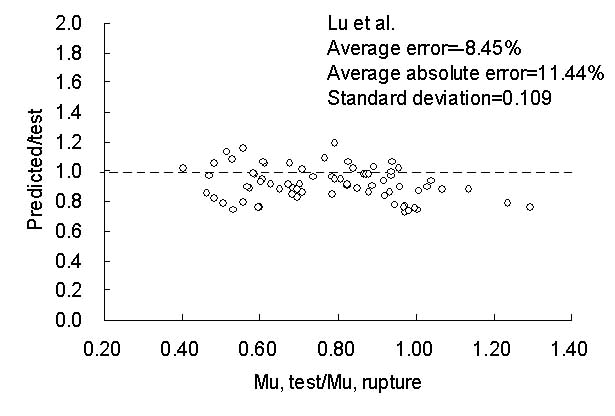Design
model for Intermediate crack induced debonding in RC beams
strengthened with FRP plates
| Homepage | My Research |
|
A
Design model for the intermediate crack induced debonding (IC debonding)
in RC beams strengthened with FRP plates is proposed based on FE
results. This model is better than any existing models comparing
with a lot of test results.
Supervisors: Prof. J. G. Teng of the Hong Kong Polytechnic University. Prof. L. P. Ye and J. J. Jiang of Tsinghua University Paper download Abstract:
The FRP-to-concrete interfacial debonding is a fundamental key problem
for the strengthening of RC structures with externally bonded FRP
sheets/plates. This paper presents the design models and detail
designs on the flexural or shear debonding of RC beams strengthened
with FRP sheets/plates, which is based on the latest experimental
and theoretical researches on the FRP-to-concrete interfacial constitutive
behavior, flexural and shear strengthening.
Intermediate
crack debonding in FRP-strengthened RC beams: FE analysis and strength
model Abstract: Reinforced concrete (RC) beams strengthened in flexure with a bonded fiber-reinforced polymer (FRP) plate may fail by intermediate crack (IC) debonding, in which debonding initiates at a critical section in the high moment region and propagates to a plate end. This paper first presents a finite-element (FE) model based on the smeared crack approach for concrete for the numerical simulation of the IC debonding process. This finite-element model includes two novel features: (1) the interfacial behavior within the major flexural crack zone is differentiated from that outside this zone and (2) the effect of local slip concentrations near a flexural crack is captured using a dual local debonding criterion. The FE model is shown to be accurate through comparisons with the results of 42 beam tests. The paper also presents an accurate and simple strength model based on interfacial shear stress distributions from finite-element analyses. The new strength model is shown to be accurate through comparisons with the test results of 77 beams, including the 42 beams used in verifying the FE model, and is suitable for direct use in design. Design proposals for the debonding strengths of FRP strengthened RC beams in the Chinese design code ABSTRACT: Debonding failures are very common in FRP strengthened RC structures so they must be carefully considered in design. In the last few years, significant new understandings of the debonding behaviour of both flexurally and shear strengthened RC beams have been achieved based on recent research on the behaviour of FRP-to-concrete interface. These new understandings are reflected in the national design standard of China, Standard for FRP in Civil Engineering, which is being drafted. This paper summarises relevant specifications adopted for such debonding failures in the new Chinese standard. Recent research on intermediate crack Debonding in FRP-strengthened RC beams ABSTRACT: An important failure mode for an RC beam strengthened with an externally bonded FRP plate is debonding of the FRP plate from the soffit of the beam due to major flexural cracks. In this failure mode which is commonly referred to as intermediate crack (IC) debonding, debonding initiates at a critical section in the high moment region and then propagates to one of the plate ends. Despite many experimental and theoretical studies, accurate predictive models for IC debonding failures have not been developed. This paper presents a new smeared crack approach for the finite element simulation of the IC debonding process, in which a new model for the FRP-to-concrete interface capable of capturing the effect of local slip concentration near a flexural crack is proposed. The finite element model is shown to be accurate through comparisons with the results of 45 beam tests. The paper also presents an accurate and simple design model based on interfacial shear stress distributions from finite element analysis. The new design model is shown to be accurate through comparisons with the test results of 73 beams, including the 45 beams used in verifying the FE model. |
|
 Comparison
with test results
|
|